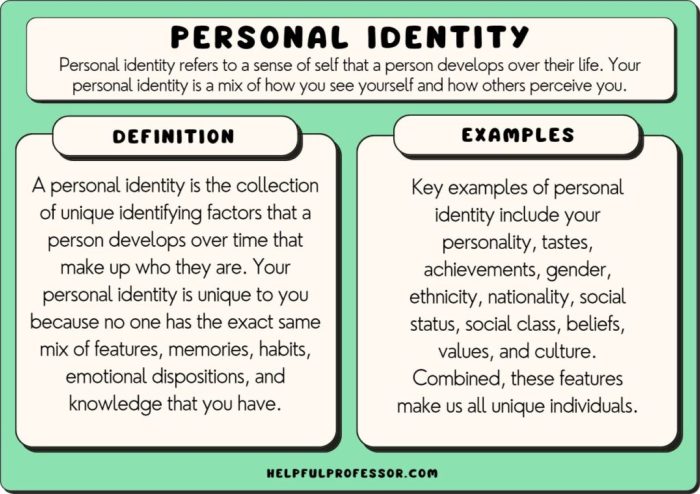5 ways save failing relationship that you cherish. Relationships are complex, and sometimes even the strongest bonds can face challenges. If you’re facing a rocky patch in a relationship you value, there’s hope. This guide delves into five crucial strategies to navigate difficulties and potentially revitalize your connection.
This exploration covers understanding the root causes of relationship problems, effective communication techniques, strategies for rekindling intimacy, addressing conflicts constructively, and maintaining commitment. Each section provides practical tools and insights to help you strengthen your bond and work towards a more fulfilling future together.
Understanding the Problem
Navigating a failing relationship is emotionally challenging. Recognizing the underlying issues is crucial for effective intervention. Identifying the root causes, whether stemming from communication breakdowns, differing values, or external pressures, allows for targeted solutions and a path toward healing or, if necessary, a healthy separation. Self-reflection on individual roles in the relationship’s decline is equally vital. Understanding these dynamics can lead to a deeper understanding of oneself and the other person, fostering healthier communication and decision-making in the future.Addressing a failing relationship necessitates a deep dive into the core issues.
This involves examining individual behaviors, communication patterns, and external factors that might be contributing to the problems. Without a clear understanding of the problem, efforts to repair the relationship may be misdirected, leading to frustration and further damage. This section delves into common scenarios of failing relationships, highlighting the patterns and factors involved.
Scenarios of Failing Relationships
Failing relationships often manifest in distinct patterns, each reflecting different underlying issues. Identifying these patterns is the first step toward effective intervention.
- Communication Breakdown: In this scenario, a lack of open and honest communication becomes a chasm between partners. Arguments escalate, leading to resentment and withdrawal. Partners may stop listening actively, focusing instead on defending their positions. This lack of empathy and understanding can hinder conflict resolution, leading to prolonged periods of disconnection.
- Differing Values and Goals: When fundamental values or life goals diverge, a relationship can face significant challenges. Disagreements on finances, career paths, family involvement, or personal growth can create persistent tension. If these differences are not addressed and accommodated, the relationship can become increasingly strained.
- Infidelity: This scenario is often marked by a significant breach of trust and emotional devastation. The betrayal often results in a loss of intimacy and confidence, impacting the emotional well-being of both partners. Reconciliation may be possible, but requires a significant commitment to rebuilding trust and open communication.
- Unresolved Conflict: Recurring conflicts that are not resolved constructively can erode the foundation of a relationship. This can manifest in a cycle of arguments, accusations, and a lack of forgiveness. Without addressing the underlying issues fueling the conflict, the relationship will continue to suffer.
- External Pressures: External pressures, such as financial hardship, family issues, or health concerns, can place immense strain on a relationship. These stresses can lead to emotional distance and difficulty in focusing on the relationship itself. Without support systems, partners may feel overwhelmed and unable to cope.
Emotional and Behavioral Patterns
Common emotional and behavioral patterns emerge in failing relationships. These patterns often indicate deeper underlying issues that need addressing.
- Increased Criticism: Partners may find themselves criticizing each other more frequently. This negativity can escalate into harsh words and personal attacks, further damaging the relationship.
- Decreased Affection: As the relationship deteriorates, physical affection and emotional intimacy diminish. Partners may withdraw from physical touch, leading to a feeling of emotional distance and isolation.
- Frequent Arguments: Arguments become more frequent and intense. The ability to communicate effectively breaks down, leading to unproductive confrontations and unresolved issues.
- Withdrawal and Avoidance: Partners may withdraw emotionally and physically, avoiding conflict and intimacy. This avoidance can further exacerbate the problems within the relationship.
External Factors
External factors can significantly impact a relationship’s trajectory. Understanding these factors is crucial to fostering a supportive environment for growth.
- Financial Difficulties: Financial strains can create tension and stress, impacting communication and decision-making within the relationship.
- Family Conflicts: Disagreements or tensions with family members can divert attention and energy from the relationship, leading to distance and resentment.
- Health Concerns: Illnesses or health issues can impact both partners’ emotional and physical well-being, straining the relationship.
- Work-Related Stress: High-stress jobs or career demands can lead to exhaustion and emotional distance, affecting the relationship.
Importance of Self-Reflection
Self-reflection is essential for understanding one’s role in the relationship’s decline. This involves honestly assessing one’s own behaviors, communication styles, and emotional responses.
- Acknowledging personal shortcomings is a crucial step in the healing process. Taking responsibility for one’s contribution to the relationship’s struggles fosters a positive atmosphere for change.
Relationship Challenges and Potential Solutions
| Relationship Challenge | Potential Solution |
|---|---|
| Communication Breakdown | Active listening, establishing clear communication protocols, and seeking professional guidance |
| Differing Values | Open discussion of values, finding common ground, and understanding each other’s perspectives |
| Infidelity | Seeking professional therapy, rebuilding trust, and acknowledging the impact of the infidelity |
| Unresolved Conflict | Identifying the root causes of the conflict, establishing healthy conflict resolution strategies, and seeking professional guidance |
| External Pressures | Developing coping mechanisms, creating a supportive environment, and seeking external resources |
Communication Strategies
Communication is the bedrock of any healthy relationship. When issues arise, effective communication becomes even more crucial for navigating disagreements and strengthening the bond. This section delves into practical techniques for improving dialogue, fostering understanding, and expressing emotions constructively within a relationship facing challenges.Open and honest communication is vital for resolving conflicts and building trust. Learning and implementing these strategies can significantly impact the trajectory of a relationship, transforming disagreements into opportunities for growth and understanding.
Active Listening Techniques
Active listening is more than just hearing words; it’s about truly understanding the speaker’s perspective, both verbally and nonverbally. This involves focusing intently on the message, reflecting back what you hear, and asking clarifying questions to ensure comprehension. By actively listening, partners demonstrate respect and create a safe space for open dialogue. This fosters empathy and understanding, essential for resolving conflicts constructively.
- Paying close attention to both verbal and nonverbal cues, such as tone of voice and body language.
- Summarizing the speaker’s message to confirm understanding.
- Asking clarifying questions to ensure a complete understanding of the speaker’s perspective.
- Avoiding interrupting or formulating a response while the other person is speaking.
- Showing empathy and acknowledging the speaker’s feelings.
Constructive Emotional Expression
Expressing emotions constructively is a key element in healthy communication. Instead of resorting to blame or criticism, partners should focus on expressing their feelings and needs in a clear and respectful manner. This involves using “I” statements, focusing on specific behaviors, and avoiding generalizations.
- Using “I” statements to express feelings and needs, such as “I feel hurt when…” or “I need…”
- Focusing on specific behaviors rather than making generalizations about the other person’s character.
- Avoiding accusatory language and personal attacks.
- Expressing emotions in a calm and controlled manner.
- Using “we” statements when appropriate to foster a sense of shared responsibility.
Setting Healthy Boundaries
Establishing healthy boundaries is essential for maintaining a balanced and respectful relationship. These boundaries define acceptable behaviors and expectations within the relationship, ensuring that both partners feel safe, respected, and valued.
- Defining personal limits and needs.
- Communicating these boundaries clearly and respectfully to the other partner.
- Enforcing boundaries consistently to maintain a sense of safety and respect.
- Recognizing that boundaries can evolve over time.
- Respecting the other partner’s boundaries, as well.
Communication Styles Comparison, 5 ways save failing relationship that you cherish
Different communication styles can significantly impact the dynamics of a relationship. Understanding these styles and their impact is crucial for adapting communication strategies.
Saving a relationship you care deeply about can feel like a monumental task, but there are five key ways to navigate the challenges. Understanding and setting healthy boundaries, as discussed in this insightful article on important boundaries empaths should set for themselves in a relationship , is crucial. This involves open communication, prioritising self-care, and actively working towards a shared understanding of needs and expectations.
Ultimately, focusing on these five strategies can help you cultivate a healthier, more sustainable connection.
| Communication Style | Description | Impact on Relationship |
|---|---|---|
| Passive | Avoids expressing needs and feelings, often yielding to others’ desires. | Can lead to resentment, frustration, and a sense of power imbalance. |
| Aggressive | Expresses needs and feelings in a forceful and demanding manner. | Can create conflict, damage trust, and lead to defensiveness. |
| Passive-Aggressive | Expresses needs and feelings indirectly, often through subtle negativity or manipulation. | Causes confusion, resentment, and undermines trust. |
| Assertive | Expresses needs and feelings directly and respectfully, while also respecting the other person’s perspective. | Fosters open communication, mutual respect, and a balanced power dynamic. |
Effective Communication in Specific Situations
Applying communication strategies to specific situations can greatly improve their outcome. For example, resolving disagreements requires a calm, focused approach that involves active listening, respectful dialogue, and a willingness to compromise. Addressing conflict with empathy and understanding is key to resolving issues constructively.
- Addressing financial concerns: Use “I” statements to express your feelings and needs, actively listen to your partner’s perspective, and explore potential solutions together.
- Discussing parenting styles: Respectfully share your concerns and expectations, listen to your partner’s perspective, and identify common goals for raising your children.
- Expressing dissatisfaction with household chores: Clearly communicate your needs and expectations for shared responsibilities, explore possible solutions together, and focus on finding a compromise that works for both of you.
Reconstructing Intimacy
Reconnecting on a deeper level is crucial for any relationship seeking to thrive. Intimacy, encompassing emotional vulnerability, physical connection, and shared experiences, is often the cornerstone of a strong bond. When intimacy fades, a relationship can feel distant and disconnected. This section focuses on practical methods to rebuild that vital connection.Rebuilding intimacy is not about magically reverting to the past, but rather about consciously creating new opportunities for closeness and connection.
It requires effort and a willingness to be vulnerable, both emotionally and physically. This process often involves addressing past hurts and grievances to pave the way for a healthier future.
Emotional Vulnerability and Trust
Emotional vulnerability is the bedrock of intimacy. It involves sharing thoughts, feelings, and fears with your partner, creating a safe space for open and honest communication. Trust, built on consistent honesty and reliability, is essential for fostering emotional vulnerability. Without trust, genuine intimacy cannot flourish. Building trust takes time and consistent effort.
Physical Connection
Physical connection is vital to maintaining intimacy. It encompasses not just sexual intimacy, but also holding hands, cuddling, and other forms of non-sexual physical affection. Physical touch can create a sense of closeness and comfort.
Shared Experiences and Quality Time
Shared experiences create lasting memories and strengthen the bond between partners. Scheduling dedicated quality time, free from distractions, allows for meaningful conversations and strengthens emotional connection. These experiences could range from simple date nights to weekend getaways or shared hobbies.
Addressing Past Hurts and Grievances
Addressing past hurts and grievances is an essential step towards rebuilding intimacy. Open and honest communication about these issues, coupled with a willingness to forgive and move forward, is crucial. Acknowledging the pain caused by past mistakes and seeking to understand each other’s perspectives can foster healing and reconciliation.
Practical Activities to Build Intimacy
| Activity | Description | Benefits |
|---|---|---|
| Shared Hobby Exploration | Try a new hobby together, like cooking, painting, or learning a new language. | Fosters shared experiences and strengthens communication. |
| Weekend Getaway | Plan a weekend trip to a new location. | Creates shared memories and provides opportunities for relaxation and connection. |
| Active Listening Exercise | Practice active listening by focusing on understanding your partner’s perspective without interruption. | Enhances emotional connection and demonstrates empathy. |
| Expressing Appreciation | Share sincere appreciation for your partner’s efforts and qualities. | Reinforces positive feelings and strengthens the bond. |
| Journaling Reflection | Each partner journaling about their feelings and thoughts regarding the relationship, then sharing the journals. | Promotes self-awareness and facilitates constructive conversations. |
Addressing Underlying Conflicts

Unraveling the knots of conflict in a relationship often requires digging deeper than surface-level disagreements. This stage involves identifying the root causes of recurring negativity, analyzing patterns, and learning constructive conflict resolution strategies. By understanding the underlying conflicts, couples can work towards a more harmonious and sustainable future.Understanding the core issues driving conflict is crucial. These issues might stem from differing communication styles, unresolved past traumas, or unmet needs.
Identifying these core conflicts is the first step towards healing and rebuilding trust.
Identifying Core Conflicts
Identifying core conflicts involves recognizing recurring patterns of negativity and conflict escalation. Pay close attention to the specific issues that keep resurfacing. Are there underlying anxieties or fears that contribute to the negativity? Understanding these patterns is essential for finding effective solutions. Journaling about specific conflicts and their triggers can help uncover these patterns.
Analyzing Patterns of Negativity and Conflict Escalation
Analyzing patterns of negativity and conflict escalation involves recognizing predictable cycles of arguments and negativity. This often involves observing how arguments typically start, escalate, and conclude. By identifying these patterns, couples can anticipate potential conflicts and implement strategies to de-escalate them before they spiral out of control. For instance, if arguments consistently revolve around financial concerns, understanding the underlying anxieties and financial stressors associated with these concerns is critical.
Navigating Disagreements Constructively
Constructive conflict resolution involves adopting strategies to navigate disagreements calmly and respectfully. This includes active listening, validating the other person’s perspective, and focusing on finding mutually agreeable solutions. It is vital to avoid personal attacks or blame games, which only deepen the conflict. Focusing on “I” statements and expressing needs rather than criticizing the partner is an effective strategy.
Establishing Compromise and Mutual Understanding
Compromise is essential in any relationship. It involves a willingness to find solutions that meet both partners’ needs. This requires active listening and a genuine effort to understand the other person’s perspective. Finding common ground and seeking mutually beneficial outcomes can foster a sense of partnership and shared responsibility. Consider creating a list of potential solutions together and discuss the pros and cons of each option.
Seeking Professional Help
Seeking professional help when conflicts become overwhelming is a sign of strength, not weakness. A therapist or counselor can provide guidance and tools to navigate challenging conversations, identify underlying issues, and develop healthy communication strategies. They can facilitate productive discussions and help couples establish a framework for resolving conflicts constructively. This is especially important when conflicts involve past traumas or significant emotional baggage.
Common Relationship Conflicts and Solutions
| Common Relationship Conflict | Potential Solutions |
|---|---|
| Financial disagreements | Create a joint budget, discuss financial goals, seek financial counseling. |
| Communication breakdowns | Practice active listening, use “I” statements, schedule dedicated communication time. |
| Differing values and priorities | Acknowledge differences, discuss the importance of each value, find compromises that honor both sets of values. |
| Jealousy and insecurity | Open communication, establish trust, seek professional help for underlying issues. |
| Unmet needs | Identify unmet needs, communicate needs clearly, explore ways to fulfill needs. |
Maintaining Commitment and Support
Rekindling the spark in a relationship often hinges on the consistent effort to maintain commitment and offer unwavering support. This final stage builds upon the foundations laid in the previous steps, solidifying the relationship’s resilience and ensuring a future together. It’s about actively choosing to invest in the connection, even when navigating the inevitable challenges life throws your way.Maintaining a strong commitment involves more than just saying “I love you.” It’s about actively demonstrating your dedication through consistent actions and thoughtful gestures.
Figuring out how to save a relationship you truly care about can be tough. While navigating those tricky first meetings with your partner’s parents is important, don’t forget the fundamental ways to strengthen your bond. For example, prioritizing open communication, actively listening, and understanding each other’s needs are crucial. Check out these 8 tips will help you lot when meeting your partners parents for the first time here to make a great first impression.
Ultimately, though, a strong foundation in communication and shared values will be your greatest allies in saving any relationship.
Mutual support plays a crucial role in this process, creating a safe space for both partners to grow and overcome obstacles.
Reaffirming Commitment
Commitment in a relationship is a two-way street. It involves demonstrating a willingness to stay invested in the relationship’s growth and evolution. This is achieved through open communication, actively listening to each other’s needs, and demonstrating empathy. Consistent effort in maintaining a positive atmosphere, acknowledging each other’s efforts, and demonstrating appreciation, builds a foundation for a stronger connection.
Remembering shared experiences and cherishing milestones are crucial aspects of reaffirming your commitment.
Importance of Mutual Support
Mutual support is essential for weathering life’s storms together. It involves encouraging each other’s aspirations, celebrating achievements, and offering a helping hand during challenging times. This creates a sense of security and belonging, fostering a deeper connection between partners. A supportive environment allows both individuals to feel valued, heard, and empowered. It creates a shared sense of resilience and strengthens the emotional bond.
Building a Strong Support System
Building a strong support system involves recognizing the value of external influences. This may include family, friends, or support groups. These external relationships can offer encouragement and understanding, complementing the support within the relationship itself. Actively involving these supportive figures in the relationship’s well-being can create a wider network of encouragement and validation. For instance, involving close friends in a shared hobby or activity can strengthen the relationship by creating shared experiences and mutual support.
Celebrating Successes and Navigating Challenges
Acknowledging and celebrating successes, both big and small, is critical. This reinforces the positive aspects of the relationship and fosters a sense of shared accomplishment. Conversely, navigating challenges together is equally vital. Open communication, active listening, and a willingness to compromise are crucial. Finding solutions together, instead of blaming each other, strengthens the bond and builds resilience.
Shared Goals and Aspirations
Shared goals and aspirations provide a common direction and a sense of purpose within the relationship. These can be personal or relational. For example, a shared dream of starting a business or raising a family can be a strong uniting force. Pursuing these shared ambitions fosters a sense of unity and shared responsibility.
Activities to Foster Commitment and Support
| Activity | Description |
|---|---|
| Regular Date Nights | Scheduling dedicated time for quality time, fostering connection, and creating shared memories. |
| Active Listening Exercises | Practicing active listening skills, focusing on understanding each other’s perspectives and feelings. |
| Shared Hobbies and Interests | Engaging in activities that both partners enjoy, creating opportunities for shared experiences and bonding. |
| Appreciative Communication | Expressing gratitude and appreciation for each other’s efforts and contributions to the relationship. |
| Financial Planning and Goals | Discussing financial goals and aspirations, creating a shared financial roadmap, and fostering a sense of shared responsibility. |
Reframing Perspectives: 5 Ways Save Failing Relationship That You Cherish
Relationships, like delicate ecosystems, thrive on positive reinforcement and mutual understanding. Negative thought patterns can quickly poison the well, leading to a vicious cycle of negativity and distrust. Reframing these perspectives is a crucial step in reviving a struggling relationship, enabling partners to see the good in each other and the future. It’s not about ignoring problems, but about re-evaluating how those problems are perceived.Negative thought patterns, often ingrained over time, can cloud judgment and create an inaccurate view of the relationship.
By actively challenging these patterns and focusing on the positive aspects, partners can foster a more optimistic and hopeful outlook, ultimately strengthening their connection. This involves recognizing and actively countering negative beliefs, shifting from a victim mentality to a collaborative approach, and appreciating the strengths and value of the relationship.
Identifying and Challenging Negative Beliefs
Negative beliefs often stem from past experiences or perceived slights. Recognizing these beliefs is the first step in challenging them. For example, if a partner consistently feels unheard, they might develop a belief that their partner doesn’t care. This belief can then shape their interactions, creating a self-fulfilling prophecy. Challenging this belief requires examining the evidence – are there instances where their partnerhas* listened?
Are there other factors contributing to the communication breakdowns? Openly discussing these issues with your partner, and actively seeking evidence to the contrary, is vital.
Shifting from a Victim Mentality to a Collaborative Approach
A victim mentality often fosters a sense of helplessness and resentment. It frames issues as external forces rather than problems that can be addressed through collaboration. To shift to a collaborative approach, partners must take responsibility for their own actions and reactions. This doesn’t mean accepting blame, but rather acknowledging the role each individual plays in the dynamic.
Saving a relationship you care about takes effort, and sometimes, a little help from the right tools. Five ways to potentially revitalize a struggling romance are often surprisingly simple. To maximize your time and energy in navigating these challenges, exploring powerful productivity tools like those found in the 20 best productivity app macs can be beneficial.
After all, streamlining your daily tasks can free up mental space for focusing on your relationship, making the process of rebuilding connection much easier. Ultimately, prioritizing communication and understanding are key to any lasting partnership.
Instead of focusing on who is “right” or “wrong,” the focus should be on finding solutions together. This requires empathy and a willingness to understand the other person’s perspective, which fosters a collaborative environment.
Appreciating the Positive Aspects of the Relationship
Relationships often get caught up in the daily grind, and the positive aspects can be overlooked. Remembering the things that drew you together, the shared joys, and the moments of connection can help reignite the flame. This can be as simple as recalling a special date, or reflecting on a time when you felt truly understood. Making a conscious effort to appreciate the positive aspects of the relationship helps counterbalance the negative thoughts.
Reframing Negative Perspectives
| Negative Perspective | Positive Perspective |
|---|---|
| “My partner never listens to me.” | “My partner has areas where they can improve in listening, but overall they are a good listener in many instances.” |
| “This relationship is doomed.” | “We have overcome challenges in the past, and we can do it again.” |
| “I’m always the one giving.” | “My partner and I have a strong bond where we both value and support each other, and both give to the relationship.” |
| “We’re incompatible.” | “We have differences, but we’ve also found common ground, and we can learn to navigate those differences together.” |
| “I’m unhappy.” | “I can find ways to improve my happiness, and I can work with my partner to find ways to improve our relationship.” |
Maintaining Independence

Relationships thrive when individuals maintain a sense of self alongside their shared journey. Ignoring personal interests and pursuits can lead to resentment and dissatisfaction, ultimately impacting the relationship negatively. A healthy relationship encourages personal growth and well-being, not stifling it. This chapter focuses on strategies for preserving individuality while nurturing a strong, supportive bond.
Importance of Individual Interests and Pursuits
Maintaining personal interests and pursuing individual passions is crucial for maintaining a balanced and fulfilling life within a relationship. Shared interests are wonderful, but individual pursuits provide an outlet for self-expression, creativity, and personal growth. When individuals feel supported in their unique interests, it strengthens their sense of self-worth and fosters a richer, more vibrant relationship dynamic. Individuals who pursue hobbies and passions outside the relationship often return to the partnership with renewed energy and enthusiasm, enriching the shared experience.
Nurturing Personal Growth and Well-being
Personal growth is an ongoing journey that extends beyond the relationship. Prioritizing self-care, setting healthy boundaries, and engaging in activities that promote physical and mental well-being are vital for overall happiness and strength. This personal investment translates into a stronger contribution to the relationship, leading to a more supportive and fulfilling experience for both partners. Taking time for oneself allows for greater emotional resilience and a more balanced perspective when facing challenges.
Maintaining Healthy Boundaries and Self-Respect
Healthy boundaries are essential for preserving individual autonomy and self-respect within the relationship. These boundaries define what each partner is willing to accept and what they will not tolerate. Establishing and communicating these boundaries fosters mutual respect and prevents resentment from building. Respecting individual needs and desires is a cornerstone of a thriving relationship.
Methods for Fostering Individual Happiness
Fostering individual happiness is not at odds with strengthening the relationship; in fact, it is often a key component. Making time for hobbies, pursuing personal goals, and maintaining connections with friends and family can significantly enhance individual well-being. This, in turn, contributes to a more positive and supportive relationship dynamic. Encouraging each other to pursue individual interests and support each other’s personal growth is a hallmark of a strong partnership.
Activities that Promote Individual Growth and Relationship Balance
| Activity | Benefit to Individual | Benefit to Relationship |
|---|---|---|
| Joining a book club | Enhances critical thinking, expands knowledge, and fosters social connections. | Provides opportunities for shared discussions and mutual learning. |
| Taking a class in a new skill | Develops new talents, boosts confidence, and encourages personal growth. | Creates shared experiences and fosters appreciation for each other’s growth. |
| Participating in a sport or physical activity | Improves physical health, reduces stress, and boosts mood. | Provides opportunities for shared activities and a healthy lifestyle. |
| Volunteering for a cause | Provides a sense of purpose, fosters empathy, and broadens perspectives. | Enhances the sense of community and shared values. |
| Spending time with friends and family | Maintains important social connections and strengthens personal support networks. | Demonstrates support for individual well-being and promotes a balanced life. |
End of Discussion
In conclusion, saving a struggling relationship requires effort, understanding, and a willingness to adapt. By implementing these five key strategies—understanding the issues, improving communication, rebuilding intimacy, addressing conflicts, and maintaining commitment—you can foster a more positive and resilient connection. Remember, the journey to a healthier relationship is a process, not a destination. Consistent effort and a commitment to growth are essential for long-term success.











